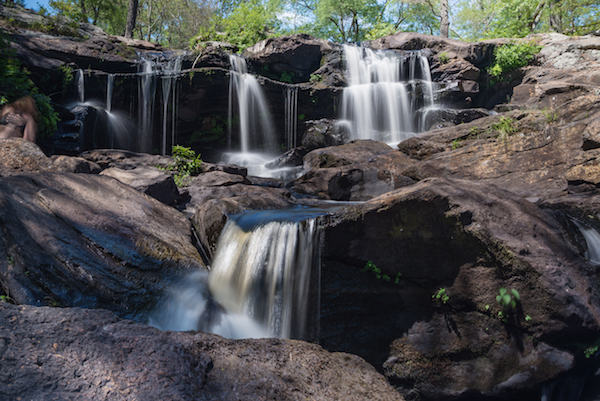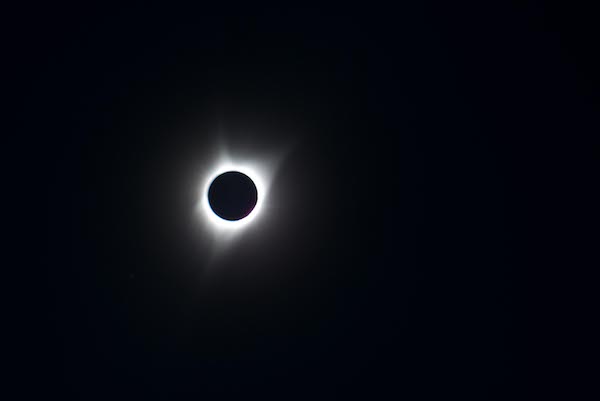You can find the most up-to-date list of my publications on ADS. Below is a list of selected publications which may or may not be recent.
First-Author Publications
arxiv.:
Accurate X-ray Timing in the Presence of Systematic Biases With Simulation-Based Inference
D. Huppenkothen, M. Bachetti, submitted to MNRAS
pnas.1717196115:
Hack Weeks as a Model for Data Science Education and Collaboration
D. Huppenkothen, A. Arendt, David W. Hogg, K. Ram, J. VanderPlas, A. Rokem
Proceedings of the National Academy of Sciences, Aug 2018, 201717196; DOI: 10.1073/pnas.1717196115
1709.09666:
On the Statistical Properties of Cospectra
D. Huppenkothen, M. Bachetti
The Astrophysical Journal Supplements, Volume 236, p. 11pp
1611.01332:
Using machine learning to explore the long-term evolution of GRS 1915+105
D. Huppenkothen, L.M. Heil, D.W. Hogg, A. Mueller
Monthly Notices of the Royal Astronomical Society, Volume 466, Issue 2, p.2364-2377
1610.08653:
Detection of Very Low-frequency, Quasi-periodic Oscillations in the 2015 Outburst of V404 Cygni
D. Huppenkothen, G. Younes, A. Ingram, C. Kouveliotou, E. Göğüş, M. Bachetti, C. Sánchez-Fernández, J. Chenevez, S. Motta, M. van der Klis, J. Granot, N. Gehrels, E. Kuulkers, J.A. Tomsick, D.J. Walton
The Astrophysical Journal, Volume 834, 17 pp. (2017)
1501.05251:
Dissecting Magnetar Variability with Bayesian Hierarchical Models
D. Huppenkothen, B. Brewer, D.W. Hogg, I. Murray, M. Frean, C. Elenbaas, A.L. Watts, Y. Levin,
A. van der Horst, C. Kouveliotou;
The Astrophysical Journal, Volume 810, 21 pp. (2015)
1409.7642:
Quasi-periodic Oscillations in Short Recurring Bursts of Magnetars SGR 1806–20 and SGR 1900+14 Observed with RXTE
D. Huppenkothen, L.M. Heil, A.L. Watts, E. Göğüş;
The Astrophysical Journal, Volume 795, 11 pp. (2014)
1408.0734:
Intermittency and Lifetime of the 625 Hz Quasi-periodic Oscillation in the 2004 Hyperflare from the Magnetar SGR 1806-20 as Evidence for Magnetic Coupling between the Crust and the Core
D. Huppenkothen, A.L. Watts, Y. Levin, The Astrophysical Journal, Volume 793 (2014)
1404.2756:
Quasi-Periodic Oscillations in the Short Recurring Bursts of the Soft Gamma Repeater J1550-5418
D. Huppenkothen, C. D'Angelo, A.L. Watts, L. Heil, M. van der Klis, A.J. van der Horst, C. Kouveliotou, M.G. Baring, E. Göğüş, J. Granot, Y. Kaneko, L. Lin, A. von Kienlin, G. Younes, The Astrophysical Journal, Volume 787, (2014), arxiv 1404.2756
1212.1011:
Quasi-Periodic Oscillations and Broadband Variability in Short Magnetar Bursts
D. Huppenkothen, A.L. Watts, M. van der Klis, C. Kouveliotou, E. Göğüş, J. Granot, S. Vaughan, M.H. Finger, The Astrophysical Journal 768 (2013), L87-L112
Contributing-Author Publications
1809.02608
The first tidal disruption flare in ZTF: from photometric selection to multi-wavelength char- acterization
van Velzen, Sjoert; Gezari, Suvi; Cenko, S.; Kara, Erin; Miller-Jones, James C.; Hung, Tiara; Bright, Joe; Roth, Nathaniel; Blagorodnova, Nadejda; Huppenkothen, Daniela; Yan, Lin; Ofek, Eran; Sollerman, Jesper; Frederick, Sara; Ward, Charlotte; Graham, Matthew J.; Fender, Rob; Kasliwal, Mansi M.; Canella, Chris; Stein, Robert; Giomi, Matteo; Brinnel, Valery; Santen, Jakob; Nordin, Jakob; Bellm, Eric C.; Dekany, Richard; Fremling, Christoffer; Golkhou, V.; Kupfer, Thomas; Kulkarni, Shrinivas R; Laher, Russ R.; Mahabal, Ashish; Masci, Frank J.; Miller, Adam A.; Neill, James D.; Riddle, Reed; Rigault, Mickael; Rusholme, Ben; Soumagnac, Maayane T.; Tachibana, Yutaro; submitted to The Astrophysical Journal
1809.08249
Constraining the limiting brightness temperature and Doppler factors for the largest sample of radio bright blazars
Liodakis, I.; Hovatta, T.; Huppenkothen, D.; Kiehlmann, S.; Max-Moerbeck, W.; Readhead, A. C. S., The Astrophysical Journal (in press)
1805.03114
Detection of non-thermal X-ray emission in the lobes and jets of Cygnus A
de Vries, M. N.; Wise, M. W.; Huppenkothen, D.; Nulsen, P. E. J.; Snios, B.; Hardcastle, M. J.; Birkinshaw, M.; Worrall, D. M.; Duffy, R. T.; McNamara, B. R., Monthly Notices of the Royal Astronomical Society, Volume 478, Issue 3, p.4010-4029 (2018)
1802.01887
The rotational phase dependence of magnetar bursts
Elenbaas, C.; Watts. A.L.; Huppenkothen, D.; Monthly Notices of the Royal Astronomical Society, Volume 476, Issue 1, p.1271-1285 (2018)
1709.09700:
No time for dead time - Use the Fourier amplitude differences to normalize dead time-affected periodograms
M. Bachetti, D. Huppenkothen,
The Astrophysical Journal Letters, Volume 853, Issue 2, article id. L21, 6 pp. (2018)
1711.04927
APO Time-resolved Color Photometry of Highly Elongated Interstellar Object 1I/’Oumuamua
Bolin, Bryce T.; Weaver, Harold A.; Fernandez, Yanga R.; Lisse, Carey M.; Huppenkothen, Daniela; Jones, R. Lynne; Jurić, Mario; Moeyens, Joachim; Schambeau, Charles A.; Slater, Colin. T.; Ivezić, Željko; Connolly, Andrew J.;
The Astrophysical Journal Letters, Volume 852, Issue 1, article id. L2, 10 pp. (2018)
1707.02922:
Magnetar giant flare high-energy emission
C. Elenbaas, D. Huppenkothen, C. Omand, A.L. Watts, E. Bissaldi, I. Caiazzo, J. Heyl,
Monthly Notices of the Royal Astronomical Society, Volume 471, Issue 2, p.1856-1872
1702.04370:
X-Ray and Radio Observations of the Magnetar SGR J1935+2154 during Its 2014, 2015, and 2016 Outbursts
G. Younes, C. Kouveliotou, A. Jaodand, M.G. Baring, A.J. van der Horst, A.K. Harding, J.W.T. Hessels, N. Gehrels, R. Gill, D. Huppenkothen, J. Granot, E. Göğüş, L. Lin
The Astrophysical Journal, Volume 847, Issue 2, article id. 85, 15 pp. (2017).
1611.10230:
Burst and Outburst Characteristics of Magnetar 4U 0142+61
E. Göğüş, L. Lin, O.J. Roberts, M. Chakraborty, Y. Kaneko, R. Gill, J. Granot, A.J. van der Horst, A.L. Watts, M.B. Baring, C. Kouveliotou, D. Huppenkothen, G. Younes
The Astrophysical Journal, Volume 835, Issue 1, article id. 68, 8 pp. (2017)
1608.07133:
Magnetar-like X-Ray Bursts from a Rotation-powered Pulsar, PSR J1119-6127
E. Göğüş, L. Lin, Y. Kaneko, C. Kouveliotou, A.L. Watts, M. Chakraborty, M.A. Alpar, D. Huppenkothen, O.J. Roberts, G. Younes, A.J. van der Horst,
The Astrophysical Journal Letters, Volume 829, Issue 2, article id. L25, 7 pp. (2016)
1606.02620:
False periodicities in quasar time-domain surveys
S. Vaughan, P. Uttley, A.G. Markowitz, D. Huppenkothen, M.J. Middleton, W.N. Alston, J.D. Scargle, W.M. Farr,
Monthly Notices of the Royal Astronomical Society, Volume 461, Issue 3, p.3145-3152
1607.08823:
eXTP: Enhanced X-ray Timing and Polarization mission
Zhang, S. N.; Feroci, M.; Santangelo, A.; Dong, Y. W.; Feng, H.; Lu, F. J.; Nandra, K.; Wang, Z. S.; Zhang, S.; Bozzo, E.; Brandt, S.; De Rosa, A.; Gou, L. J.; Hernanz, M.; van der Klis, M.; Li, X. D.; Liu, Y.; Orleanski, P.; Pareschi, G.; Pohl, M.; Poutanen, J.; Qu, J. L.; Schanne, S.; Stella, L.; Uttley, P.; Watts, A.; Xu, R. X.; Yu, W. F.; in 't Zand, J. J. M.; Zane, S.; Alvarez, L.; Amati, L.; Baldini, L.; Bambi, C.; Basso, S.; Bhattacharyya S.;, Bellazzini, R.; Belloni, T.; Bellutti, P.; Bianchi, S.; Brez, A.; Bursa, M.; Burwitz, V.; Budtz-Jørgensen, C.; Caiazzo, I.; Campana, R.; Cao, X.; Casella, P.; Chen, C. Y.; Chen, L.; Chen, T.; Chen, Y.; Chen, Y.; Chen, Y. P.; Civitani, M.; Coti Zelati, F.; Cui, W.; Cui, W. W.; Dai, Z. G.; Del Monte, E.; de Martino, D.; Di Cosimo, S.; Diebold, S.; Dovciak, M.; Donnarumma, I.; Doroshenko, V.; Esposito, P.; Evangelista, Y.; Favre, Y.; Friedrich, P.; Fuschino, F.; Galvez, J. L.; Gao, Z. L.; Ge, M. Y.; Gevin, O.; Goetz, D.; Han, D. W.; Heyl, J.; Horak, J.; Hu, W.; Huang, F.; Huang, Q. S.; Hudec, R.; Huppenkothen, D.; Israel, G. L.; Ingram, A.; Karas, V.; Karelin, D.; Jenke, P. A.; Ji, L.; Korpela, S.; Kunneriath, D.; Labanti, C.; Li, G.; Li, X.; Li, Z. S.; Liang, E. W.; Limousin, O.; Lin, L.; Ling, Z. X.; Liu, H. B.; Liu, H. W.; Liu, Z.; Lu, B.; Lund, N.; Lai, D.; Luo, B.; Luo, T.; Ma, B.; Mahmoodifar, S.; Marisaldi, M.; Martindale, A.; Meidinger, N.; Men, Y.; Michalska, M.; Mignani, R.; Minuti, M.; Motta, S.; Muleri, F.; Neilsen, J.; Orlandini, M.; Pan, A. T.; Patruno, A.; Perinati, E.; Picciotto, A.; Piemonte, C.; Pinchera, M.; Rachevski A.; Rapisarda, M.; Rea, N.; Rossi, E. M. R.; Rubini, A.; Sala, G.; Shu, X. W.; Sgro, C.; Shen, Z. X.; Soffitta, P.; Song, L.; Spandre, G.; Stratta, G.; Strohmayer, T. E.; Sun, L.; Svoboda, J.; Tagliaferri, G.; Tenzer, G.; Hong, T.; Taverna, R.; Torok, G.; Turolla, R.; Vacchi, S.; Wang, J.; Walton, D.; Wang, K.; Wang, J. F.; Wang, R. J.; Wang, Y. F.; Weng, S. S.; Wilms, J.; Winter, B.; Wu, X.; Wu, X. F.; Xiong, S. L.; Xu, Y. P.; Xue, Y. Q.; Yan, Z.; Yang, S.; Yang, X.; Yang, Y. J.; Yuan, F.; Yuan, W. M.; Yuan, Y. F.; Zampa, G.; Zampa, N.; Zdziarski, A.; Zhang, C.; Zhang, C. L.; Zhang, L.; Zhang, X.; Zhang, Z.; Zhang, W. D.; Zheng, S. J.; Zhou, P.; Zhou X. L.
Proceedings of the SPIE, Volume 9905, id. 99051Q 16 pp. (2016)
1604.06472:
The Wind Nebula around Magnetar Swift J1834.9-0846
G. Younes, C. Kouveliotou, O. Kargaltsev, R. Gill, J. Granot, A.L. Watts, J. Gelfand, M.G. Baring, A. Harding, G.G. Pavlov, A.J. van der Horst, D. Huppenkothen, E. Göğüş, L. Lin, O.J. Roberts,
The Astrophysical Journal, Volume 824, Issue 2, article id. 138, 12 pp. (2016)
1503.04152:
The Five Year Fermi/GBM Magnetar Burst Catalog
A.C. Collazzi, C. Kouveliotou, A.J. van der Horst, G.A. Younes, Y. Kaneko, E. Göğüş, L. Lin, J. Granot, M.H. Finger, V.L. Chaplin, D. Huppenkothen, A.L. Watts, A. von Kienlin, M.G. Baring, D. Gruber, P.N. Bhat, M.H. Gibby, N. Gehrels, J. McEnery, M. van der Klis, R.A.M.J. Wijers,
The Astrophysical Journal Supplement Series, Volume 218, Issue 1, article id. 11, 30 pp. (2015)
1402.6015:
Time Resolved Spectroscopy of SGR J1550-5418 for the Fermi/GBM Bursts
G. Younes, C. Kouveliotou, A.J. van der Horst, M.G. Baring, J. Granot, A.L. Watts, P.N. Bhat, A. Collazzi, C.R. D'Angelo, N. Gehrels, N. Gorgone, E. Göğüş, D. Gruber, S. Grunblatt, D. Huppenkothen, A. von Kienlin, Y. Kaneko, L. Lin, J. McEnery, M. van der Klis, T. van Putten, R.A.M.J. Wijers, The Astrophysical Journal, Volume 785 (2014), arxiv 1402.6015
1212.4144:
The Outflow History of Two Herbig-Haro Jets in RCQ 36: HH1042 and HH1043
L.E. Ellerbroek, L. Podio, L. Kaper, H. Sana, D. Huppenkothen, A. de Koter, L. Monaco, Astronomy and Astrophyscs 551 (2013), A5
1206.4915:
Detection of Spectral Evolution in Bursts Emitted During the 2008-2009 Active Episode of SGR J1550-5418
A. von Kienlin, D. Gruber, C. Kouveliotou, J. Granot, M.G. Baring, E. Göğüş, D. Huppenkothen, Y. Kaneko, L. Lin, A.L. Watts, N.P. Bhat, S. Guiriec, A.J. van der Horst, E. Bissaldi, J. Greiner, C.A. Meegan, W.S. Paciesas, R.D. Preece, A. Rau, The Astrophysical Journal 755 (2012), L150-L161
1011.0731:
Using the X-ray Morphology of Young Supernova Remnants to Constrain Type, Ejecta Distribution and Chemical Mixing
L.A. Lopez, E. Ramirez-Ruiz, D. Huppenkothen, C. Badenes, D.A. Pooley, The Astrophysical Journal 732 (2011), L114-L132
0910.3208:
Typing Supernova Remnants Using X-ray Line Emission Morphologies
L.A. Lopez, E. Ramirez-Ruiz, C. Badenes, D. Huppenkothen, T.E. Jeltema, D.A. Pooley, Astrophysical Journal Letters 706 (2009), L106-L109



